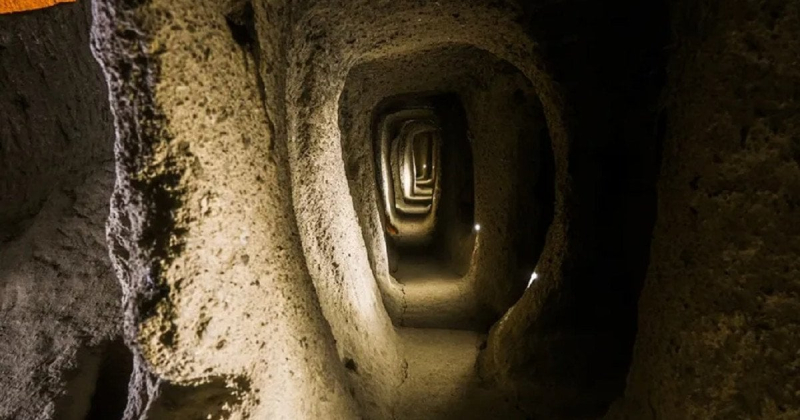A renovation in the basement led to the discovery of a mysterious tunnel, which turned out to be part of a large underground city.

In 1963, in Nevsehir Province (Turkey), an ordinary resident accidentally broke through a wall during a basement renovation and stumbled upon a mysterious passage. This passage became the entrance to the huge underground city of Derinkuyu, capable of accommodating about 20 thousand people along with their animals and supplies.
IFLScience writes about this.
What began as simple repair work quickly turned into one of the most important archaeological discoveries of the 20th century. Beyond the first tunnel, new corridors opened up, forming a complex labyrinth that extended deep underground. Further exploration revealed that the city had 18 floors underground, reaching a depth of about 85 meters. It had all the conditions for autonomous living: living quarters, schools, chapels, stables, and a press for the production of wine and oil.
According to the conclusion of archaeologists of the Turkish Ministry of Culture, the construction of Derinkuyu could have begun as early as the 8th-7th centuries BC. It was probably built first by the Phrygians, an Indo-European people who lived in Anatolia. They used soft volcanic tuff, which was easy to process. At first, the caves were probably used for storing food, since the temperature underground remained consistently cool.
The city reached its greatest development during the Byzantine era, approximately between 395 and 1453 AD. It was then that Derinkuyu became a real fortress, which extended over an area of approximately 445 square kilometers. The network of tunnels contained hidden entrances, ventilation shafts to supply fresh air even to the lower levels, wells and water channels.
The main purpose of creating such a large underground complex was security. The city served as a reliable shelter for local residents during numerous wars and raids. The defense was carefully thought out: the entrances could be quickly blocked from the inside with large round stone doors weighing up to half a ton, which were almost impossible to move from the outside. The corridors were specially made narrow so that enemies had to move alone – this significantly facilitated the defense. In addition, the residents of the lower levels could shut off the water supply to the upper floors, so that
Over the centuries, Derinkuye has been a refuge for various peoples. The first Christians took refuge here from Roman persecution, and later Muslims during the Arab-Byzantine wars in 780-1180.
Although Derinkuyu is impressive in its scale, it is not the largest underground city in the Cappadocia region. It is only part of a larger network of such settlements. Interestingly, such caves were used as storage facilities even in the 20th century. For example, the Cambridge linguist Richard MacGillivray Dawkins, who visited the region at the beginning of the century, reported that during the Adana massacre in 1909, many locals from the nearby town of Akso hid in underground shelters, avoiding spending the night on the surface.
Today, Derinkuyu is a popular tourist attraction open to visitors. It stands as a silent witness to centuries of history, human ingenuity, and the unwavering will to survive. The accidental discovery of an ordinary man in his own basement has given the world a unique landmark that helps us peer into the depths of the past and understand what people are capable of in order to protect their lives and culture.
Let us recall that earlier we wrote that in the Nile Delta archaeologists found a city with temples, agricultural facilities and religious artifacts. It was not recorded on the maps.

